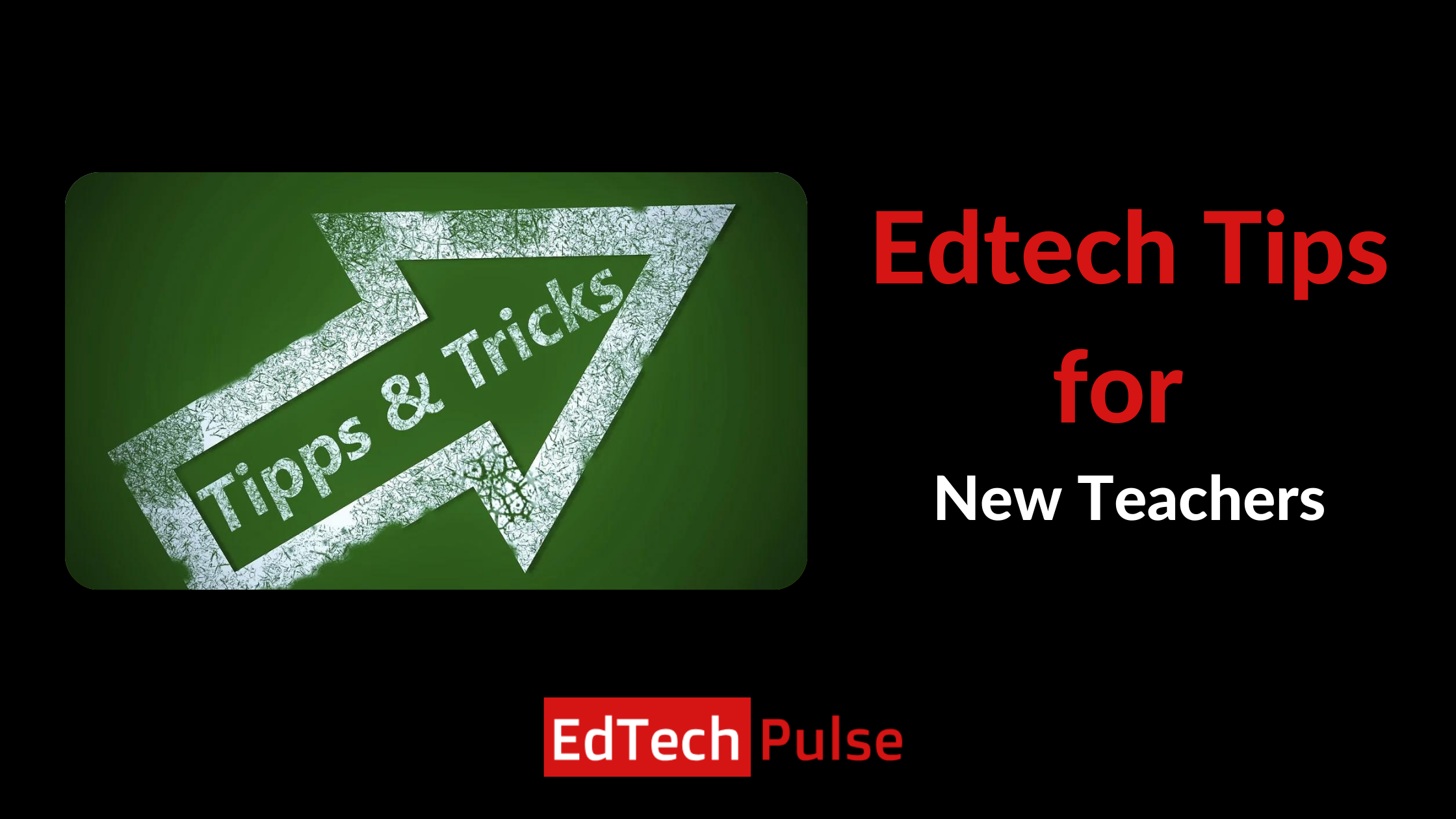Edtech Tips for New Teachers
The advent of technology in education has offered numerous benefits to teachers and students, including better communication and collaboration skills. In fact, educators are using technology that offers increased interactivity and hybrid models of online and in-person activities to supplement video lectures and engage students in the classroom.
Note that it takes more than just converting a worksheet into a virtual format to integrate technology into the classroom. Instead, it entails utilizing technology to improve teaching and give students opportunities to demonstrate how well they’ve learned.
Edtech tools have altered teaching, learning, and assessment in many ways. The first thing required in a tech-driven classroom has to be a teacher adept with technology. As a result, students will benefit from their teacher's pedagogical technological abilities.
As a new teacher, you can employ the following edtech tips to redefine the learning experience of your students:
1. Student Learning Is the Paramount
Learning must be the foundation of everything we do in the classroom, and there are unquestionably several benefits of utilizing technology in education.
Educators have not adopted edtech because it is broadly accessible or enjoyable. But, they employ edtech to facilitate students' learning more effectively. Thus, before you start learning about an edtech platform or tool, ask yourself the following:
- What do you hope your lessons will teach the students?
- How can a particular edtech tool help with this?
2. Stick To Using One Learning Platform or Tool
Consider selecting one platform and using it consistently. You won’t want to undermine the learning process by making your students use a new platform or technical feature every day. It detracts students from the core purpose of school - learning. You can gradually introduce new edtech tools as students become more adept at using each one.
A successful strategy to use technology in the classroom is to give lessons and materials to your students through a reliable learning platform. For instance, Google Classroom or Microsoft Teams. Using one platform is likely to boost the ability of your students to access the study material.
3. Preparation Is Key In Teaching
Preparing the lessons you’re about to teach the next day is perhaps an integral part of a teacher’s routine. This habit helps you function more effectively in the classroom as you adhere to a predetermined, detailed outline in your mind during each lesson. The same is true for using technology in education.
Try out all of its features and functionalities before using one in class. This will help you become better equipped to reply to student queries with the help of the edtech tool. Also, having that expertise will make the technology implementation in class with students go more smoothly.
4. Keep an Alternate Edtech Tool in Mind
Avoid limiting your technical abilities to one edtech platform. Keep in mind that you are utilizing technology in education to assist students in achieving their learning objectives. So, in case an edtech tool can convey even a tiny aspect of a chapter in a better way, consider exploring it. You will love to see how well your students respond to questions using their critical thinking abilities after using new technology.
Although it's not necessary to use every new edtech tool that appears, think about how a tool's features will in some way improve teaching and learning.
5. Learn From Your Colleagues
Work as closely as you can with the other educators in your school and students in your class. There may be ways that other teachers are using the same edtech platform that you have not yet explored, or they may be using tools that you are not yet familiar with. This will also lead to informal professional development by exchange of ideas and best practices.
6. Leverage Government Initiatives
To keep yourself updated with the use of technology in classrooms, you can also consider using platforms like DIKSHA. Through DIKSHA, the government intends to employ technology to improve the abilities of teachers. It is a digital platform that enables teachers all around the country to keep up with cutting-edge technology while also incorporating it into their daily lives.
7. Be Patient
There could be times when you are teaching using an edtech tool, and something goes wrong. In fact, this can occur in any lesson across the curriculum, regardless of tech usage.
But, your confidence in using technology in the classroom will boost if you have the patience and tenacity to keep trying. This is especially crucial when introducing and experimenting with new concepts in the classroom. If, at first, you are unsuccessful, try a different approach.
Wrapping Up
Technology in education has made way for the latest teaching tools and methodologies that have redefined education in classrooms. Your capacity to integrate technology into education will increase if you evaluate and amend your teaching pedagogy with a solution-focused mindset.
As a new teacher with effective learning through technology being one of your goals, these tech-friendly teaching tips are likely to serve well if you’re just starting your teaching journey in this age of digitization.
